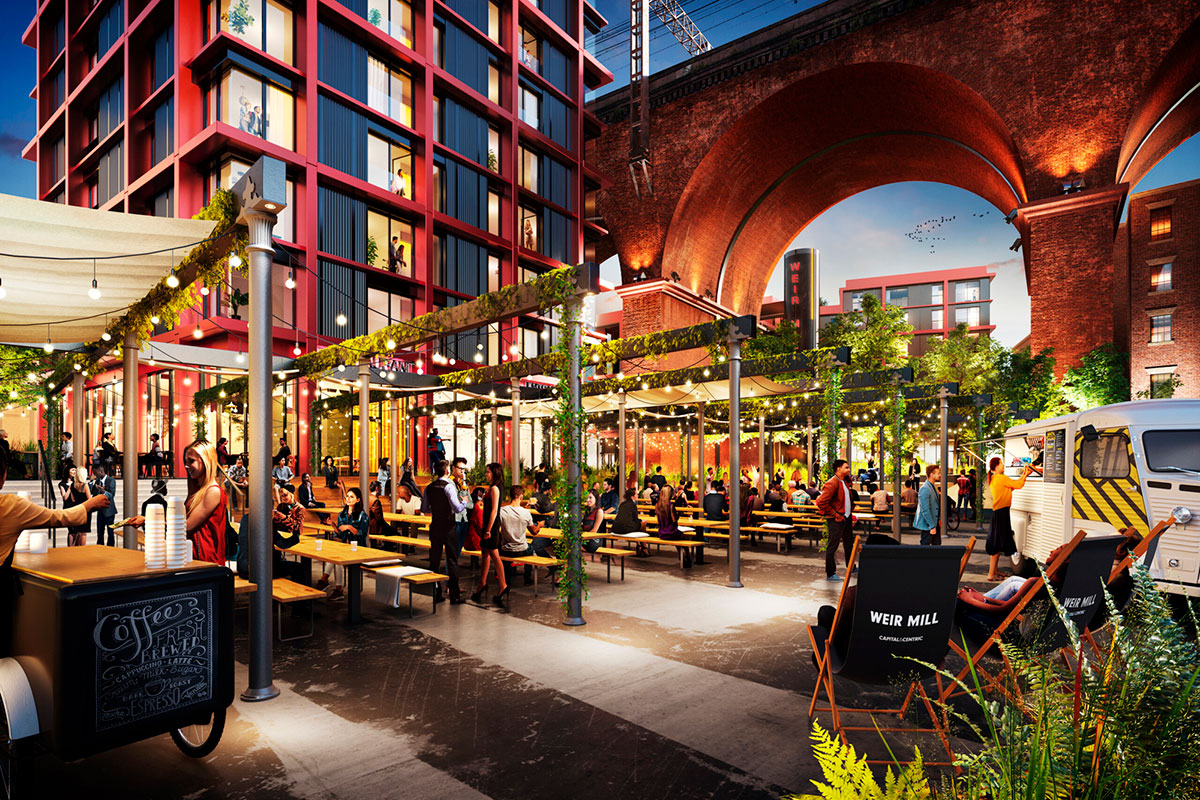#{Title}
#{Copy}
Our designs for a mixed use, 253-home development at Weir Mill, Stockport have been approved by Stockport Council. The plans, for our client, Capital & Centric, include restoration of the mill buildings and the construction of two new buildings to create a thriving new community.
The news comes less than a week after Historic England launched a report claiming that vacant mills in the north of England could create up to 9,000 new homes.
The new development, which is supported by £7m of Housing Infrastructure Fund cash from Homes England, will also include a new 60,000 sq ft waterfront outdoor public space and 24,000 sq ft of shops and leisure facilities.
The refurbished, Grade II listed former cotton mill will feature a mix of one, two and three-bedroom apartments, as well as 24,000 sq ft of commercial space across the existing and new buildings. The adjoining West Shed is intended as a relaxed and flexible co-working space, set amongst the amazing brick vaulted ceilings.

Adam Higgins, co-founder of Capital & Centric said: “The reality is that this stunning historic mill, parts of which date back as far as the late 1700s, were at risk of being lost forever. Thanks to Stockport’s support, we can not only save Weir Mill, but make it one of the main storylines in Stockport’s next chapter.”
Weavers Square, a new public space, will create a flexible venue for markets and events, and is located next to the Grade II* listed Stockport Viaduct, giving people the opportunity to experience the scale of the amazing structure up close. The square will feature retained cast-iron columns from the site’s former weavers’ shed, while West Courtyard, another of the development’s outdoor spaces, provides a lush, green oasis for residents.
Architect director Mark Braund, said: “This project presents an exciting opportunity to showcase how innovative, people-centred design can bring a dilapidated mill building in a key location in Stockport into vibrant new use. These plans will go a long way towards expressing the importance of the mill’s place in the town’s industrial heritage, whilst linking the development into wider regeneration, creating a prosperous and important place.”